« Return to all search results
Title Search Results
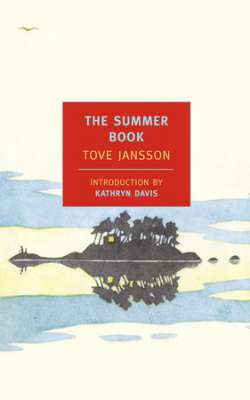
In The Summer Book Tove Jansson distills the essence of the summer—its sunlight and storms—into twenty-two crystalline vignettes. This brief novel tells the story of Sophia, a six-year-old girl awakening to existence, and Sophia’s grandmother, nearing the end of hers, as they spend the summer on a tiny unspoiled island in the Gulf of Finland. The grandmother is unsentimental and wise, if a little cranky; Sophia is impetuous and volatile, but she tends to her grandmother with the care of a new parent. Together they amble over coastline and forest in easy companionship, build boats from bark, create a miniature Venice, write a fanciful study of local bugs. They discuss things that matter to young and old alike: life, death, the nature of God and of love. “On an island,” thinks the grandmother, “everything is complete.” In The Summer Book, Jansson creates her own complete world, full of the varied joys and sorrows of life.Tove Jansson, whose Moomintroll comic strip and books brought her international acclaim, lived for much of her life on an island like the one described in The Summer Book, and the work can be enjoyed as her closely observed journal of the sounds, sights, and feel of a summer spent in intimate contact with the natural world.
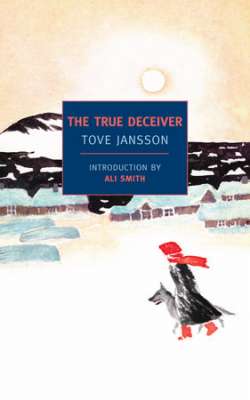
A New York Review Books OriginalWinner of the Best Translated Book AwardDeception—the lies we tell ourselves and the lies we tell others—is the subject of this, Tove Jansson’s most unnerving and unpredictable novel. Here Jansson takes a darker look at the subjects that animate the best of her work, from her sensitive tale of island life, The Summer Book, to her famous Moomin stories: solitude and community, art and life, love and hate.Snow has been falling on the village all winter long. It covers windows and piles up in front of doors. The sun rises late and sets early, and even during the day there is little to do but trade tales. This year everybody’s talking about Katri Kling and Anna Aemelin. Katri is a yellow-eyed outcast who lives with her simpleminded brother and a dog she refuses to name. She has no use for the white lies that smooth social intercourse, and she can see straight to the core of any problem. Anna, an elderly children’s book illustrator, appears to be Katri’s opposite: a respected member of the village, if an aloof one. Anna lives in a large empty house, venturing out in the spring to paint exquisitely detailed forest scenes. But Anna has something Katri wants, and to get it Katri will take control of Anna’s life and livelihood. By the time spring arrives, the two women are caught in a conflict of ideals that threatens to strip them of their most cherished illusions.
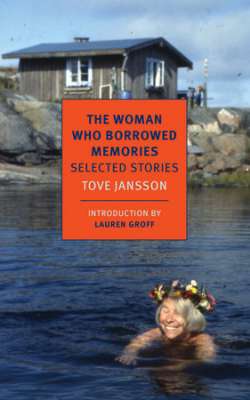
An NYRB Classics Original Tove Jansson was a master of brevity, unfolding worlds at a touch. Her art flourished in small settings, as can be seen in her bestselling novel The Summer Book and in her internationally celebrated cartoon strips and books about the Moomins. It is only natural, then, that throughout her life she turned again and again to the short story. The Woman Who Borrowed Memories is the first extensive selection of Jansson’s stories to appear in English. Many of the stories collected here are pure Jansson, touching on island solitude and the dangerous pull of the artistic impulse: in “The Squirrel” the equanimity of the only inhabitant of a remote island is thrown by a visitor, in “The Summer Child” an unlovable boy is marooned along with his lively host family, in “The Cartoonist” an artist takes over a comic strip that has run for decades, and in “The Doll’s House” a man’s hobby threatens to overwhelm his life. Others explore unexpected territory: “Shopping” has a post-apocalyptic setting, “The Locomotive” centers on a railway-obsessed loner with murderous fantasies, and “The Woman Who Borrowed Memories” presents a case of disturbing transference. Unsentimental, yet always humane, Jansson’s stories complement and enlarge our understanding of a singular figure in world literature.
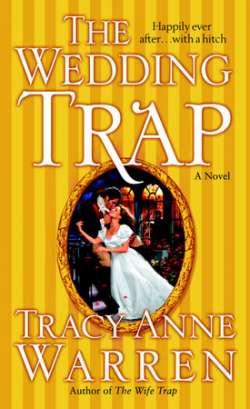
From ugly duckling to beautiful swanEliza Hammond has always been quiet and reserved–hardly the best qualities for finding the man of her dreams and living happily ever after. A new heiress, Eliza is financially secure, courtesy of her aunt’s fortune, but even great wealth has its drawbacks since every greedy, fortune-hunting bachelor suddenly finds Eliza irresistible.To help her best friend, Violet takes Eliza’s romantic dilemma into her own hands, enlisting the social skills of her brother-in-law, Lord Christopher “Kit” Winter. Kit helps transform Eliza into a stunning belle, certain to attract a worthy beau. There’s just one problem: Eliza has always been head over heels in love with Kit, the very man who is trying to find her a husband! But during Eliza’s sometimes-comic extreme makeover, and with a few secret love lessons from Kit on the side, sparks–and passionate kisses–begin to fly. Kit soon finds himself completely overcome by an all-consuming desire for Eliza. But if he fails to realize his true love for her, he may lose this fair lady forever.

“With impeccable research and flawless prose, Chevalier perfectly conjures the grandeur of the pristine Wild West . . . and the everyday adventurers—male and female—who were bold enough or foolish enough to be drawn to the unknown. She crafts for us an excellent experience.” —USA TodayFrom internationally bestselling author Tracy Chevalier, a riveting drama of a pioneer family on the American frontier1838: James and Sadie Goodenough have settled where their wagon got stuck – in the muddy, stagnant swamps of northwest Ohio. They and their five children work relentlessly to tame their patch of land, buying saplings from a local tree man known as John Appleseed so they can cultivate the fifty apple trees required to stake their claim on the property. But the orchard they plant sows the seeds of a long battle. James loves the apples, reminders of an easier life back in Connecticut; while Sadie prefers the applejack they make, an alcoholic refuge from brutal frontier life. 1853: Their youngest child Robert is wandering through Gold Rush California. Restless and haunted by the broken family he left behind, he has made his way alone across the country. In the redwood and giant sequoia groves he finds some solace, collecting seeds for a naturalist who sells plants from the new world to the gardeners of England. But you can run only so far, even in America, and when Robert’s past makes an unexpected appearance he must decide whether to strike out again or stake his own claim to a home at last. Chevalier tells a fierce, beautifully crafted story in At the Edge of the Orchard, her most graceful and richly imagined work yet.
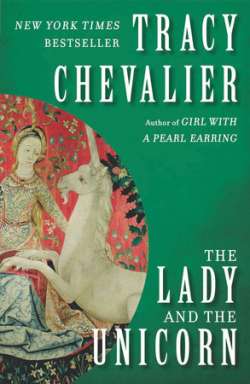
A tour de force of history and imagination, The Lady and the Unicorn is Tracy Chevalier’s answer to the mystery behind one of the art world’s great masterpieces—a set of bewitching medieval tapestries that hangs today in the Cluny Museum in Paris. They appear to portray the seduction of a unicorn, but the story behind their making is unknown—until now.Paris, 1490. A shrewd French nobleman commissions six lavish tapestries celebrating his rising status at Court. He hires the charismatic, arrogant, sublimely talented Nicolas des Innocents to design them. Nicolas creates havoc among the women in the house—mother and daughter, servant, and lady-in-waiting—before taking his designs north to the Brussels workshop where the tapestries are to be woven. There, master weaver Georges de la Chapelle risks everything he has to finish the tapestries—his finest, most intricate work—on time for his exacting French client. The results change all their lives—lives that have been captured in the tapestries, for those who know where to look.In The Lady and the Unicorn, Tracy Chevalier weaves fact and fiction into a beautiful, timeless, and intriguing literary tapestry—an extraordinary story exquisitely told.
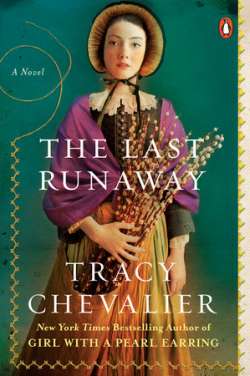
New York Times bestselling author of Girl With a Pearl Earring and At the Edge of the Orchard Tracy Chevalier makes her first fictional foray into the American past in The Last Runaway, bringing to life the Underground Railroad and illuminating the principles, passions and realities that fueled this extraordinary freedom movement. Honor Bright, a modest English Quaker, moves to Ohio in 1850--only to find herself alienated and alone in a strange land. Sick from the moment she leaves England, and fleeing personal disappointment, she is forced by family tragedy to rely on strangers in a harsh, unfamiliar landscape. Nineteenth-century America is practical, precarious, and unsentimental, and scarred by the continuing injustice of slavery. In her new home Honor discovers that principles count for little, even within a religious community meant to be committed to human equality. However, Honor is drawn into the clandestine activities of the Underground Railroad, a network helping runaway slaves escape to freedom, where she befriends two surprising women who embody the remarkable power of defiance. Eventually she must decide if she too can act on what she believes in, whatever the personal costs.From the Trade Paperback edition.
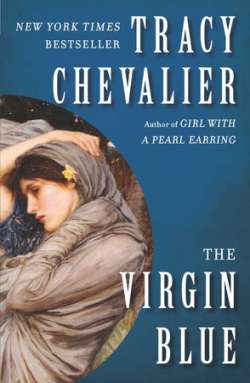
Meet Ella Turner and Isabelle du Moulin—two women born centuries apart, yet bound by a fateful family legacy. When Ella and her husband move to a small town in France, Ella hopes to brush up on her French, qualify to practice as a midwife, and start a family of her own. Village life turns out to be less idyllic than she expected, however, and a peculiar dream of the color blue propels her on a quest to uncover her family’s French ancestry. As the novel unfolds—alternating between Ella’s story and that of Isabelle du Moulin four hundred years earlier—a common thread emerges that unexpectedly links the two women. Part detective story, part historical fiction, The Virgin Blue is a novel of passion and intrigue that compels readers to the very last page.
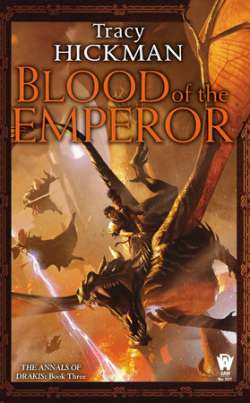
It appears that an ancient prophecy is about to be fulfilled as the human named Drakis—formerly one of countless warrior-slaves to the elves of the Rhonas Empire—returns from his quest in the North. Flying into the rebel camp with his surviving companions on the backs of the legendary dragons that were once humankind's most powerful allies, Drakis is hailed as the champion of all the slave races. But it is not a prophecy that drives Drakis in his war against the elves and their emperor. Rather it is his burning desire for revenge against the cruel ruler whom Drakis believes has stolen any chance he has for finding peace. And this hatred will set Drakis and his rebel army on a path that may not only bring down the emperor, but Drakis and his entire world as well....

The second novel in the "enthralling" (Midwest Book Review) Annals of Drakis fantasy epic.The fates of Drakis, former slave warrior of the elven empire of Rhonas, and Soen, former Inquisitor of the Iblisi, are inexorably tied to the magic of Aether-lifeblood of the elven empire and the cause of humanity's fall. As each searches for the truth beyond legends, he must face his own destiny: Drakis amid the ruins of humanity's Lost Citadels; Soen in a desperate race to seize control of the farthest Aether Well of the empire...
